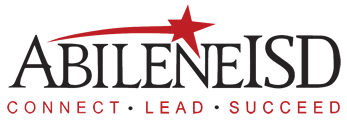By LANCE FLEMING
Abilene ISD Communications
Monday’s total solar eclipse has captured the nation’s imagination and brought thousands of tourists from all over the globe to the United States, which will experience a total eclipse over the contiguous 48 states for the first time since Feb. 26, 1979.
Texas is one of the most popular destinations for many of the tourists. The eclipse enters the United States in Eagle Pass at 1:27 p.m. and leaves the state near Texarkana at 1:45 p.m. That 594-mile stretch will provide those who want to see the total eclipse with the most area and time to view the event.
The path continues from Texas through Oklahoma, Arkansas, Missouri, Illinois, Kentucky, Indiana, Ohio, Pennsylvania, New York, Vermont, New Hampshire, and Maine. Small parts of Tennessee and Michigan will also experience the total solar eclipse. The eclipse will enter Canada in Southern Ontario and continue through Quebec, New Brunswick, Prince Edward Island, and Cape Breton. The eclipse will exit continental North America on the Atlantic coast of Newfoundland, Canada, at 2:46 p.m. CDT (5:16 p.m. Newfoundland Time).
The fascination for this eclipse can also be found in Abilene, where people can still see a partial solar eclipse even though the city isn’t in the path of the total eclipse. The moon will cover most of the sun at approximately 1:37 p.m.
That means children across the country will be in class when the eclipse crosses their area, and students in Abilene ISD are no different. However, the district has partnered with Hardin-Simmons University, the Houston Museum of Natural Science, and Buccee’s to ensure students who want to see the eclipse will do so with the donation of solar viewers and solar sunglasses.
Abilene ISD Science Coordinator Betsy Feemster was at the state Science Conference last November, where the Houston Museum of Natural Science presented a lecture and announced it would be helping the coordination of solar viewers through a grant from Buccee’s to any school district in the state that wanted to take advantage of the offer.
Feemster had already been in contact with instructional staff on each campus in the district about how each campus could purchase eclipse glasses when the offer was made. She quickly requested the viewers, and Buccee’s and the Houston Museum delivered, providing the district with one viewer for every five people looking at the eclipse. The district gave those viewers to middle school and high school campuses.
At about the same time, Feemster was approached by representatives from HSU about the district’s need for solar eclipse glasses for students to wear during Monday’s event. Courtney Spoon, HSU’s Director of Community Relations & Prospective Student Experience, agreed to order as many as the district needed to fill in on campuses that hadn’t already glasses or on campuses that hadn’t received enough. HSU provided 2,400 pairs of eclipse glasses for district use.
“The generosity of those organizations is a huge financial help for our district,” Feemster said. “The cost of purchasing enough glasses for every student to experience this wonderful science event would have been almost prohibitive. By providing these glasses/viewers, both donations opened up the discussion on creating an experience that everyone can enjoy, not just students in a science class. It’s not every day that students learn about astronomical events and experience them at the same time.”
Mary Burke – Communications and Content Strategy Specialist in University Marketing at HSU – said the university’s partnership with Abilene ISD in providing eclipse glasses is a community investment. HSU hosted a Health Fair at Ortiz Elementary School on Thursday, providing dinner, giveaways, and access to multiple resources for Ortiz students and families.
“HSU always wants to collaborate and invest in the local community,” Burke said. “This eclipse is a unique opportunity that we didn’t want anyone to miss out on experiencing. Providing eclipse glasses allows for a safe learning opportunity for everyone. HSU intends to be a resource to the Big Country in every way possible, and providing the tools for learning is one small way to be that resource.”
And with those viewers and glasses, Feemster hopes students across the district can get a glimpse – albeit a shaded one – at the wonder of science.
“I hope the students learn that science is a part of our natural world and occurs around us all the time,” she said. “The key to understanding our natural world is to look up and experience firsthand the science they are learning in the classroom.













